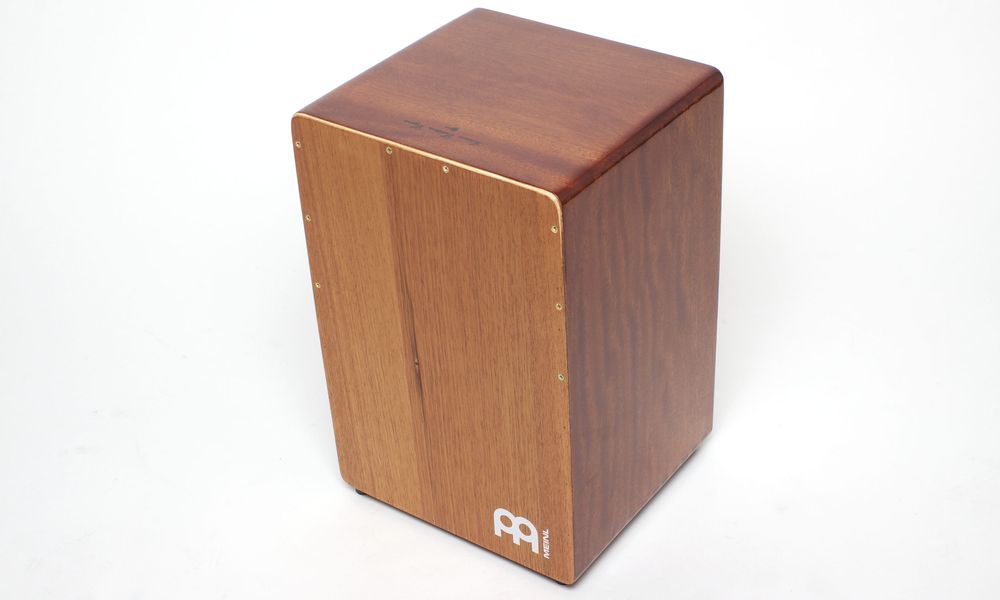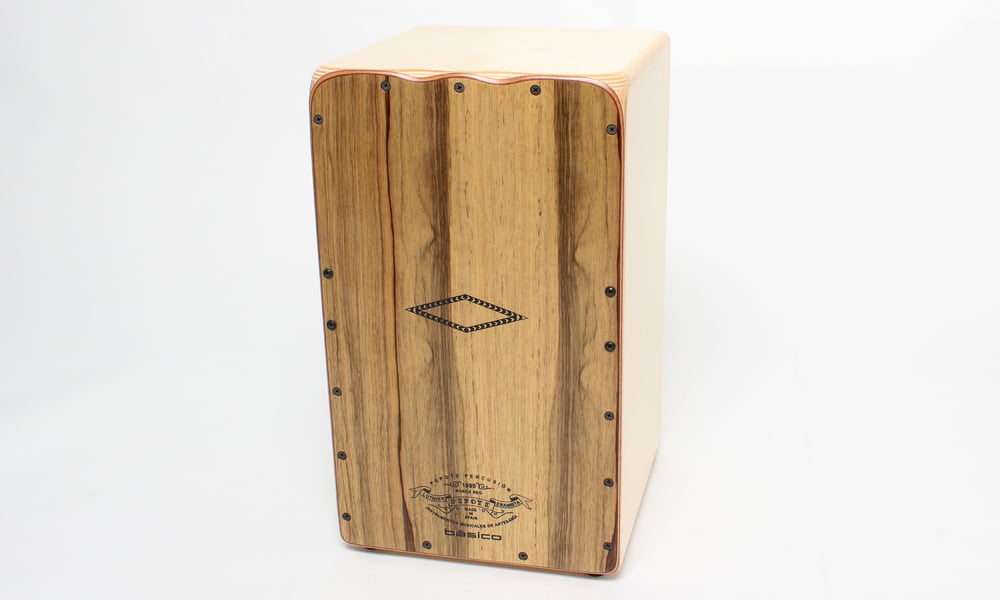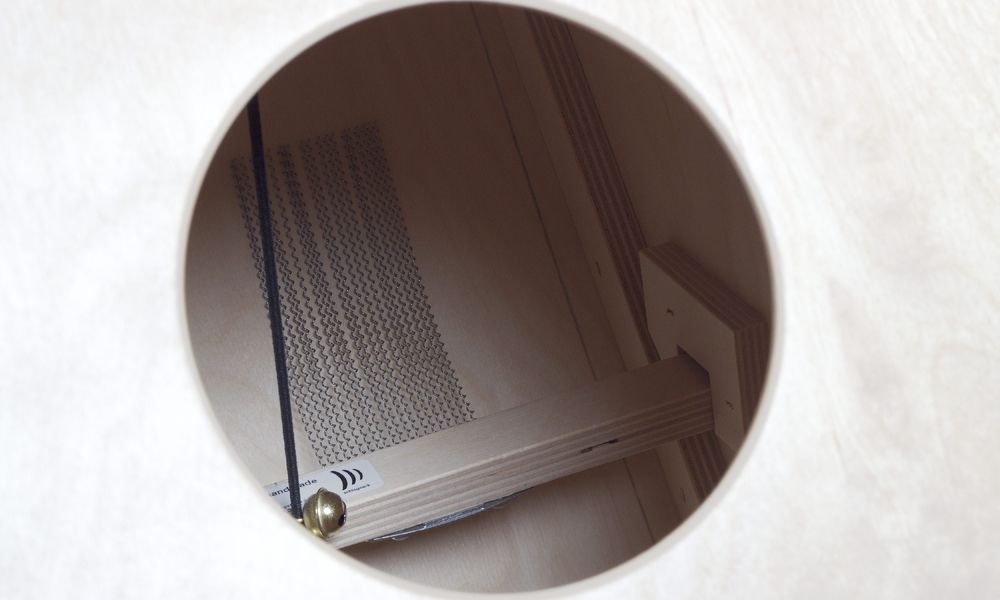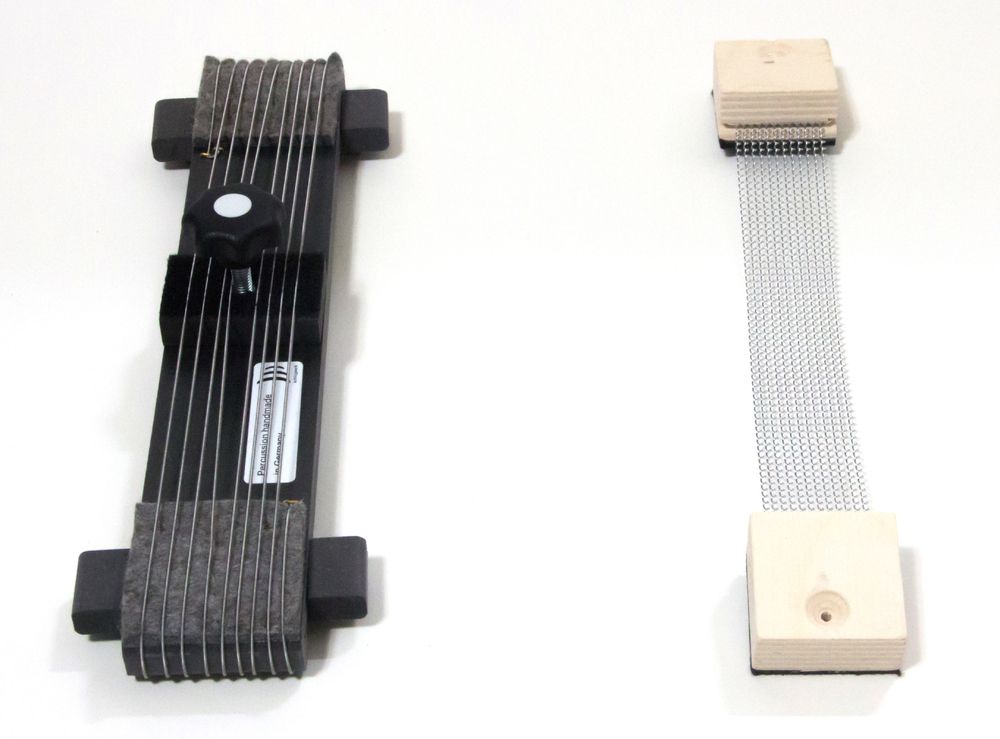4. Construction types
The traditional Afro-Peruvian cajón is the base of the type of cajón that has become popukar in Europe. Its construction is simple and it does not feature a snare mechanism. Merely a wooden-clicking snare effect is possible thanks to a narrow gap between the playing surface and the body at the top edge, where wood can be made to strike wood.
The base of the Peruvian cajón is rectangular, so that it is a little wider than it is deep. Broadly accepted standard measurements are about 50x30x25 cm (height x width x depth). Its characteristic sound is wooden, clear, and voluminous.

Flamenco cajónes are direct descendants of the Afro-Peruvian cajón, and in Germany they are the most popular variety. In contrast to their Latin American ancestors, they feature a snare mechanism attached to the inside of the playing surface, which originally consisted of guitar strings and sometimes additional little bells attached inside the body. This variation's base is almost exactly square, so that today most Flamenco cajónes on the market measure about 50x30x30cm (height x width x depth). Thanks to the snare mechanism, their sound is somewhat drier and more aggressive than that of the Afro-peruvian cajón.
Other snare mechanisms are also found in modern cajónes. A very common variation are the type of snare wires usually used on the bottom head of a snare drum (spiral snare wires) and which in the cajon press against the inside of the playing surface.

Depending on the snare mechanism installed, a distinction is often made between string cajónes and snare cajónes. In direct comparison, string cajónes offer a somewhat more sensitive and delicate string response, which can often also be adjusted. But they are more difficult to make and thus are also usually more expensive than snare cajónes. The latter can most often not be adjusted, but they often offer the option of turning over or entirely removing the snare mechanism, which immediately makes them sound like the classic Afro-Peruvian instruments.

With the continual further development of cajónes, which has sped up noticeably in the last few years in particular, other snare mechanisms have also been launched. In some cases, strings or snares are directly glued to the back of the playing surface, while other instruments feature modular elements which can be insterted into the cajón as a whole and removed just as easily.

Some cajónes also come equipped with lever or pull mechanisms that allow the player from the outside to adjust the force with which the snare mechanism is pressed against the playing surface.
Cuban cajónes, known there also as Rumba de Cajón Cubana (Cuban rumba boxes) are stil consigned to a niche in the market here. The Cuban bass cajón, also called salidor, is reminiscent of its Afro-Peruvian relatives, but it is significantly wider and open at the bottom. Other construction types include the medium-sized, almost conga-shaped tres-dos and the smaller quinto, both of which are instruments which are held between the legs and played on the top and side surfaces. The shoebox-sized cajita is even smaller, and it is mounted on a stand and played with sticks.
Thanks to the never-tiring inventive minds of the cajón manufacturers there is a whoel range of other construction types. Some are collapsible or feature several playingf surfaces, others can be combined to something akin to a cajón drum set, can be belted to the stomach or played on the lap.
In addition, small and medium-sized cajóns are available, allowing children, too, to play them comfortably.
Those in search of a bargain may want to opt for one of the avaiable cajón assembly kits. They contain all necessary materials and can be assembled without fancy tools, which offers the option of individually customising them.
The following chapters refer almost exclusively to the Flamenco cajón, as this is the most commonly sold type we offer.
Your Contacts
Product Highlights
Offers
-
Cajons
Recommended categories
Do you like what you're seeing?






